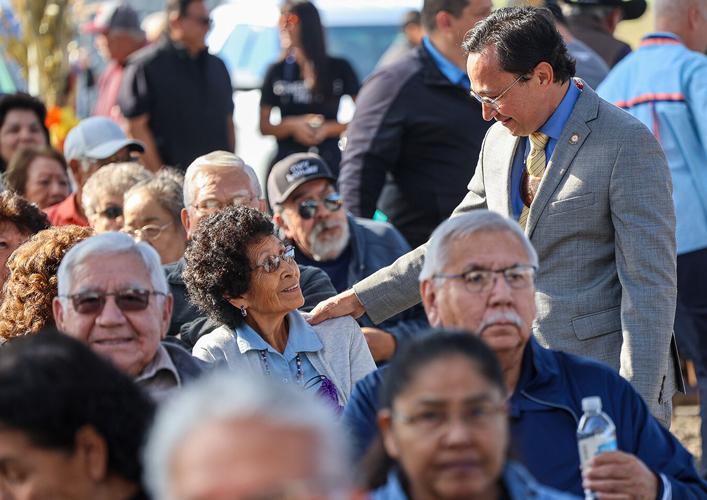Language serves as a vital link to our ancestral heritage, personal identity, and our understanding of the world around us. For the Cherokee Nation, the effort to preserve and revitalize our unique Cherokee language is not merely a cultural endeavor but a sacred responsibility. Each spoken or written Cherokee word contributes to reclaiming a fundamental aspect of what it means to be Cherokee. Despite the immense challenges we face in this revitalization effort, recent advocacy directed towards the federal government has initiated significant progress. Notably, at the White House Tribal Nations Summit, the Biden-Harris Administration launched a comprehensive 10-year National Plan on Native Language Revitalization, marking a pivotal moment in recognizing and addressing the U.S. government’s historical role in the decline of Indigenous languages.
This new initiative reflects the voices of tribal nations and is a collaborative effort involving various federal departments, such as the Interior, Education, and Health and Human Services. For the Cherokee Nation, this increased momentum presents an opportunity to advance our cultural objectives. Recently, we formalized a partnership with federal entities, including the Department of the Interior and the Bureau of Indian Affairs, along with Cherokee Film. This collaboration aims to leverage film and media as tools for language revitalization, allowing us to preserve and promote the Cherokee language in contemporary contexts. By utilizing popular educational and entertainment platforms, we can ensure that future generations encounter Cherokee spoken and celebrated in daily life, deepening their connection to our language and culture.
The backbone of the federal 10-year vision builds upon significant findings from the Federal Indian Boarding School Initiative, which highlighted the severe and long-lasting impact of suppressing Native languages on Indigenous communities and families. Addressing this historical injustice demands a robust response, including plans to fund 100 new K-12 Native language immersion schools and train up to 10,000 Native language teachers. For the Cherokee Nation, these national efforts align perfectly with our dedicated initiatives aimed at language preservation. Through our Durbin Feeling Language Preservation Act, we are investing approximately $20 million annually towards revitalizing the Cherokee language, while anticipating an additional $1.5 billion in federal funding to support language immersion programs across the country over the next decade.
While we commend the current administration for taking strides in Indigenous language revitalization, it is vital to acknowledge that the work transcends political affiliations and timeframes. The vision for language revitalization is one that requires ongoing collaboration across various administrations and evolving congressional dynamics. Our approach is rooted in a bipartisan foundation, allowing the administration and the Council of the Cherokee Nation to advocate effectively for our language and cultural interests, irrespective of who holds political power in Washington. This commitment ensures that the revitalization efforts of the Cherokee Nation continue uninterrupted and grow stronger, focusing on long-term sustainability beyond specific political cycles.
As dedicated stewards of Cherokee culture, we envision a vibrant future where our language thrives in diverse environments such as classrooms, homes, and media platforms, from television screens to mobile phones. Wherever there is a desire to learn or hear the Cherokee language, we aspire to be present. The resources provided through the federal 10-year plan are a vital support mechanism; however, the true responsibility lies in our hands to utilize these resources effectively. Language revitalization is inherently about empowering individuals who learn Cherokee, enabling them to carry our heritage, culture, and community forward into the future.
In conclusion, the journey towards revitalizing the Cherokee language is a multifaceted endeavor, intersecting culture, education, and community empowerment. The recent federal initiatives combined with our local commitment serve as a beacon of hope and progress. As we embrace this moment, it is imperative that we cultivate a spirit of collaboration and action, ensuring that Cherokee continues to be a living, thriving language. By investing in our youth, fostering engagement through media, and maintaining a long-term vision, we can collectively achieve a future where the Cherokee language flourishes for generations to come, thereby honoring our ancestors and fortifying our collective cultural identity.

